One of the main joys in superhero narratives is, once a character’s power set has been established, to see it put to different uses. In a genre that’s often close to speculative sci-fi, there is something particularly gratifying when writers and artists (whether it’s the original creators or guns-for-hire working on a decades-old franchise) come up with clever, innovative, and sometimes surprising approaches to familiar powers. And just as it can be quite fun to have them extrapolate imaginative applications (and consequences and evolutions…) of super-powers, the same goes for having them reverse-engineer explanations for why and how those powers operate in the first place.
Not that there is a universal need to know the origins or specific logistics of each power – I’m certainly willing to accept physics-defying magic in fantasy yarns without feeling the urge to break down and rationally understand all the mechanics in order to wrap my head around it. Indeed, for every instance of satisfyingly mind-blowing revisionism (most famously Alan Moore’s work on Swamp Thing), there are probably twice as many cases where providing a pseudo-scientific grounding for super-powers just ended up ruining their mystical appeal (here the most infamous example is the reduction of the Force to measurable midi-chlorians in the Star Wars prequels).
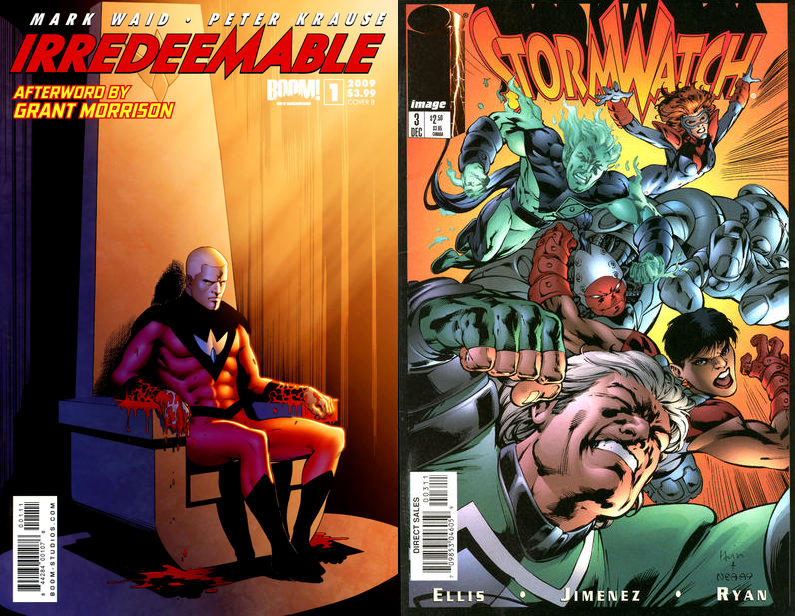
With that in mind, today I want to highlight some takes on this sort of thought experiments which I found especially inventive, by two masters of the field.
Let’s start with Mark Waid, the guy who has probably spent more time than anyone else on Earth-Prime trying to figure out what makes superheroes tick and how to approach them from new angles without breaking the mold… Hell, recently, in Batman/Superman: World’s Finest #18-19, he has even managed to come up with an interesting version of the first team-up between the Caped Crusader and the Man of Steel, packed with nice little character bits. Even better was his amazing team-up between the Joker and Lex Luthor (in #25, easily one of my favorite issues this year), where the two villains got to beautifully synthesize their motivations in a single page:

Batman/Superman: World’s Finest #25
Between 2009 and 2012, Waid stretched his writing muscles by penning one of the most delightfully nasty superhero comics on the stands. The premise of Irredeemable was that a thinly veiled ersatz-Superman – called Plutonian – turned from being the world’s greatest superhero into its most terrifying supervillain. The unsettling first issue opens with him using his heat vision to disintegrate a mother and a child and it’s all rampage and forward momentum from then on, combining nifty concepts (like an ultrasonic virus) with a fair bit of satire (the scene at the UN where John Bolton desperately tries to form a global nuclear alliance is priceless!).
Irredeemable’s relatively bland art is largely compensated by the smart scripts, which trust you to know enough superhero tropes to get by without needlessly elaborating about every character’s abilities and basic characterization… Instead, Waid builds on top of widespread conventions and recognizable lore, gleefully subverting them along the way.
In one of the coolest passages, the series delves into the nature of Plutonian’s powers, thus offering a fascinating reinterpretation of the workings of the Man of Steel. Arguing that no humanoid form of that size would be capable of storing enough energy to do what Superman/Plutonian does, the comic explains this iconic set of super-powers as psionic rather than physical (i.e. ‘mind over muscle’), positing that they all stem from the same capacity to affect matter:
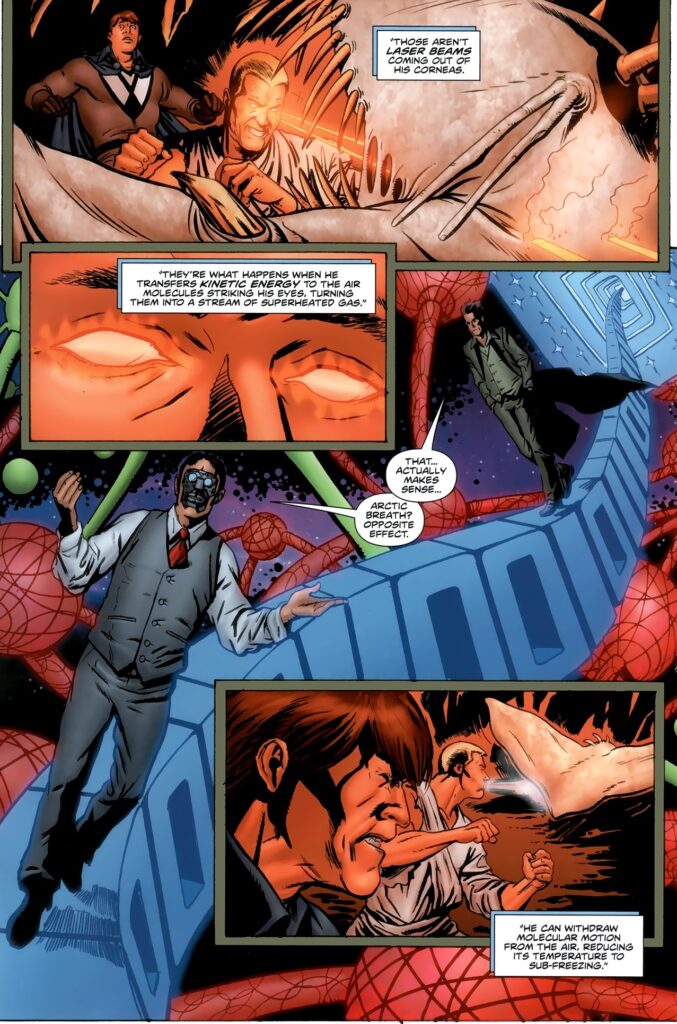
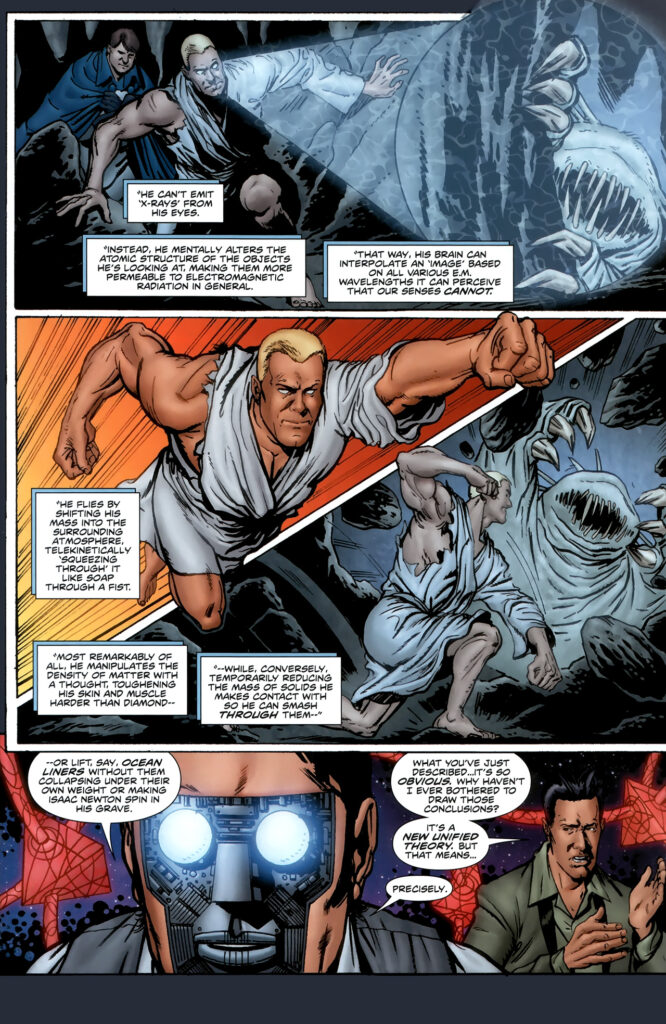
Irredeemable #25
This was not entirely new territory for Mark Waid, who had explored the notion of perverted superheroes in the past (most notably in Kingdom Come) and who remains one of the all-time greatest Superman writers, so he knows exactly which beats to hit for maximum effect.
That said, I recall Waid publicly deriding the end of Zack Snyder’s Man of Steel – in fact, one of the many, many Easter Eggs in the opening issue of Batman/Superman: World’s Finest was the brief insinuation that destroying Metropolis in a slugfest with Zod could only be the behavior of a Superman driven insane by red kryptonite (since then, the efforts to drag powerful supervillains away from populated cities has remained a recurring motif in the series). The decision to demystify these powers through a stand-in rather than through the original Superman is perhaps revealing of Waid’s respect for the character (and not just of DC’s editorial protection of its intellectual property).
In turn, just a few years before, Marvel gave Warren Ellis free rein to deconstruct the powers of the company’s official cast, albeit in its ‘edgier’ alternative line, the Ultimate universe. I really like how he approached the Fantastic Four, a super team that had always had a shine of science fiction to them, even though their stories tended to verge more into all-out fantasy… Ellis helped the series live up to its ‘weird sci-fi’ reputation, putting his skill for technobabble and his sharp sense of humor to good use:
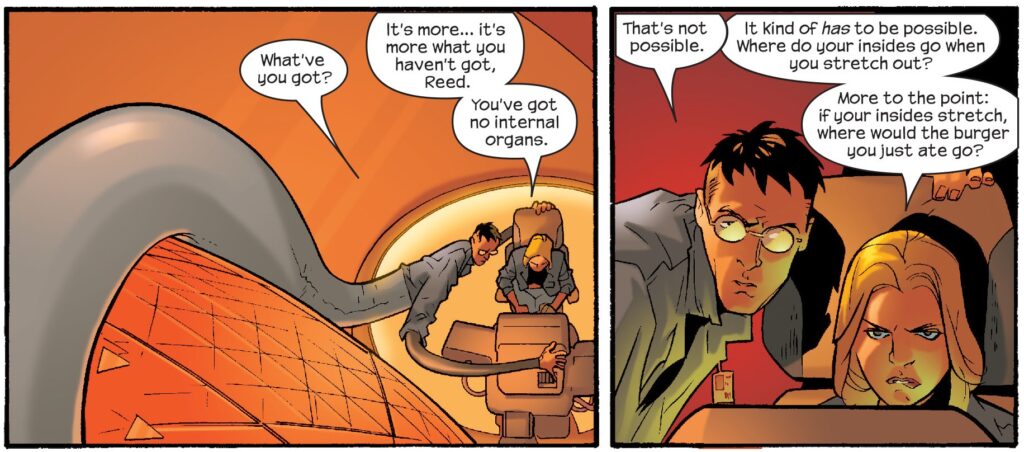
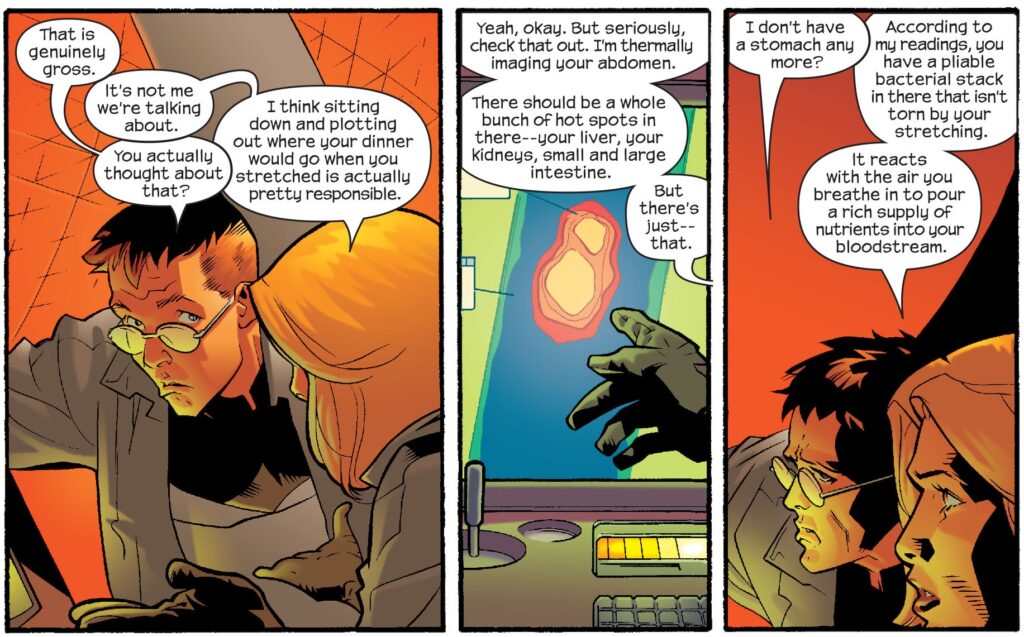
Ultimate Fantastic Four #7
These comics are full of neat considerations about the characters’ biology, especially when it comes to the Thing (‘He weighs, like, half a ton. How does he inflate his lungs?’). I’m guessing some of these ideas were leftovers from Ruins, Warren Ellis’ parody of Marvels in which he had imagined the worst possible version of the Marvel Universe, one where anything that could’ve gone wrong did go wrong, including with the mutations at the core of most heroes…
While the most grotesque design is probably the tumor-ridden Hulk (viciously brought to the page by Terese Nielsen’s painted artwork), the twisted take on the Fantastic Four shows that Ellis also put quite a bit of thought into their powers’ potential implications for their bodies (rendered by Chris Moeller, in a more restrained style than Nilsen’s).
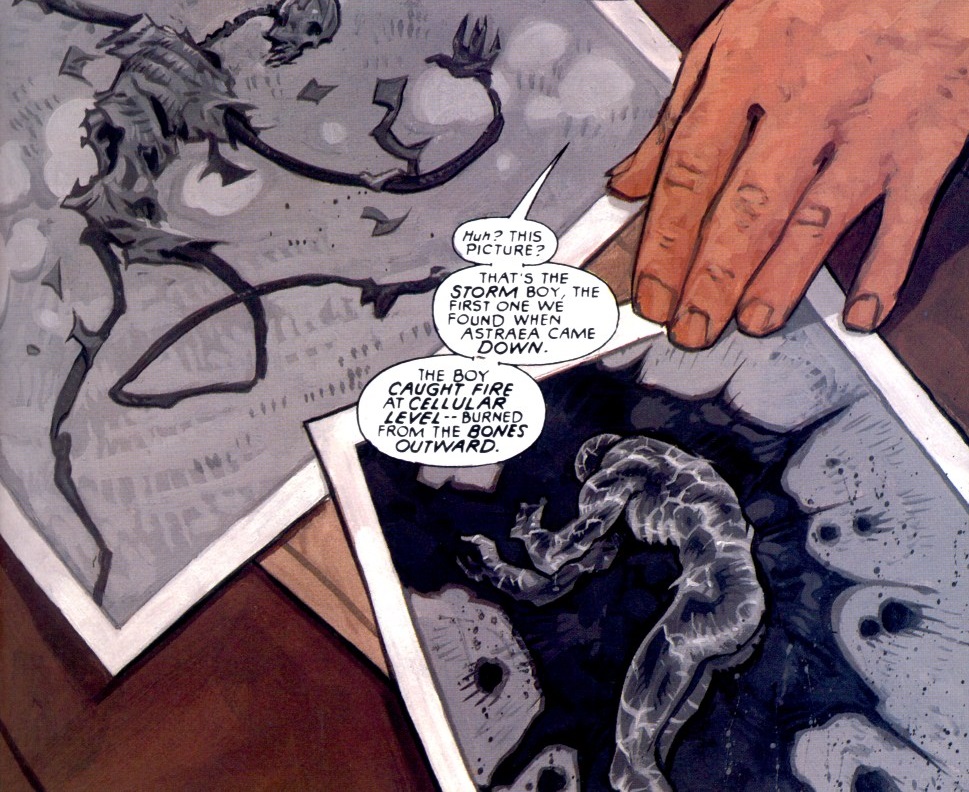
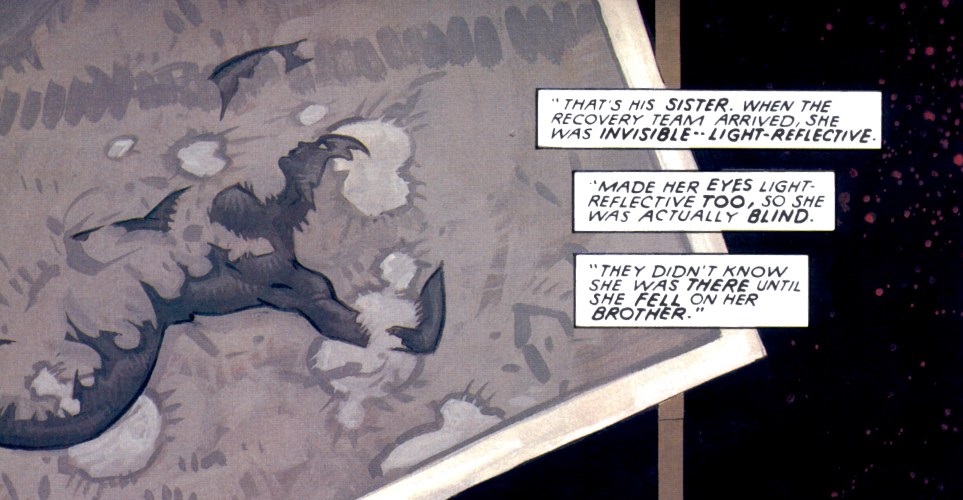
Ruins #2
My favorite instances of Warren Ellis playing around with the nuts and bolts of superheroes’ powers, though, actually go back to his seminal run on StormWatch, in the mid-to-late 1990s.
In one of the funniest issues – and a masterclass of entertaining characterization – the members of the titular UN team gathered around Clark’s Bar & Grill (WildStorm Universe’s main superhero hangout place, possibly situated in a multiversal nexus – a la Munden’s Bar from GrimJack – given the amount of background cameos) and exchanged anecdotes about their various transfigurations…
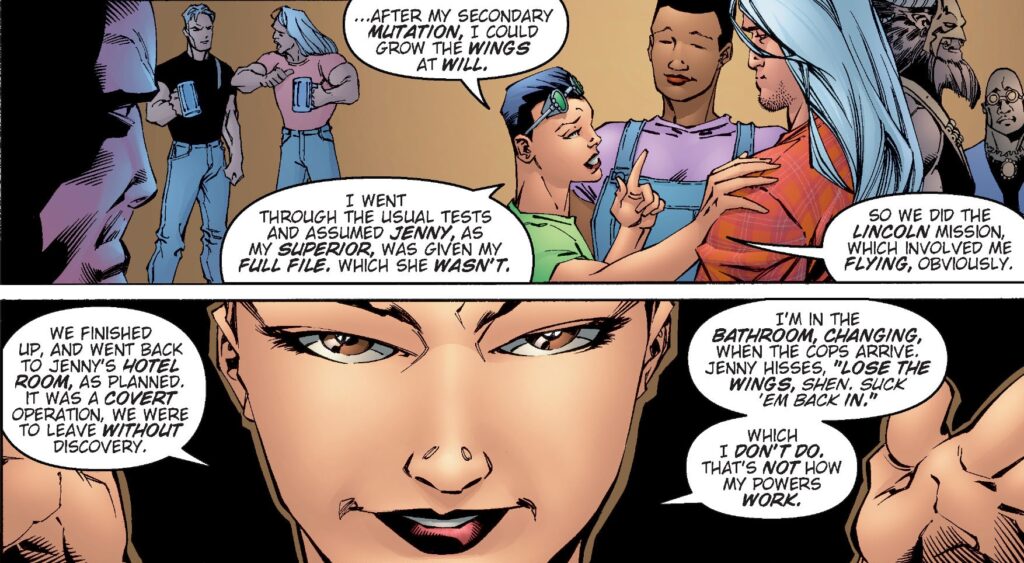
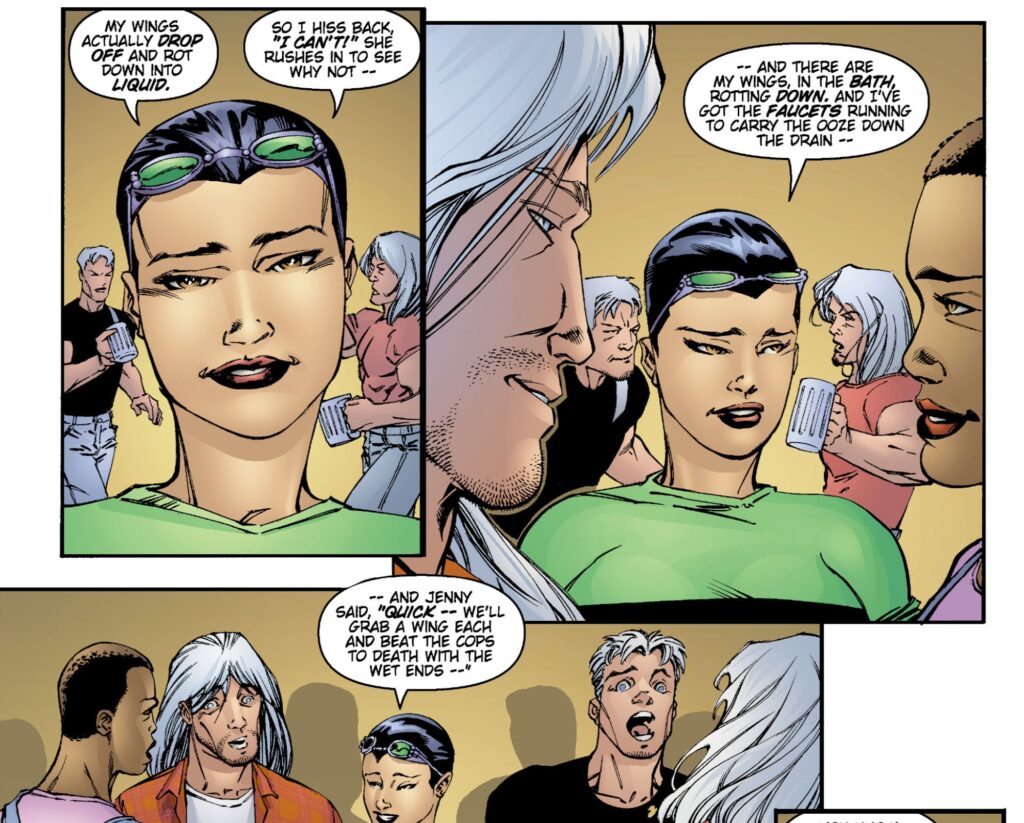
StormWatch #46
Warren Ellis didn’t create Swift, who is telling the story above, but he put an amusing twist on the workings of her wings which didn’t contradict what we’d seen before (even though later writers and artists pretty much ignored this).
It was such an awesome set up that Ellis reworked it less than a year later, once again using the banter at Clark’s Bar & Grill to offhandedly explore the possibilities of the heroes’ unusual physical characteristics, with hilarious results:


StormWatch (v2) #2
Depressingly, we now know that the reason Warren Ellis came up with this specific bit of effective sci-fi comedy may have been because his own sexual drive appears to be quite compulsive and out-of-control… which lends a whole self-deprecating layer to the rest of the conversation:
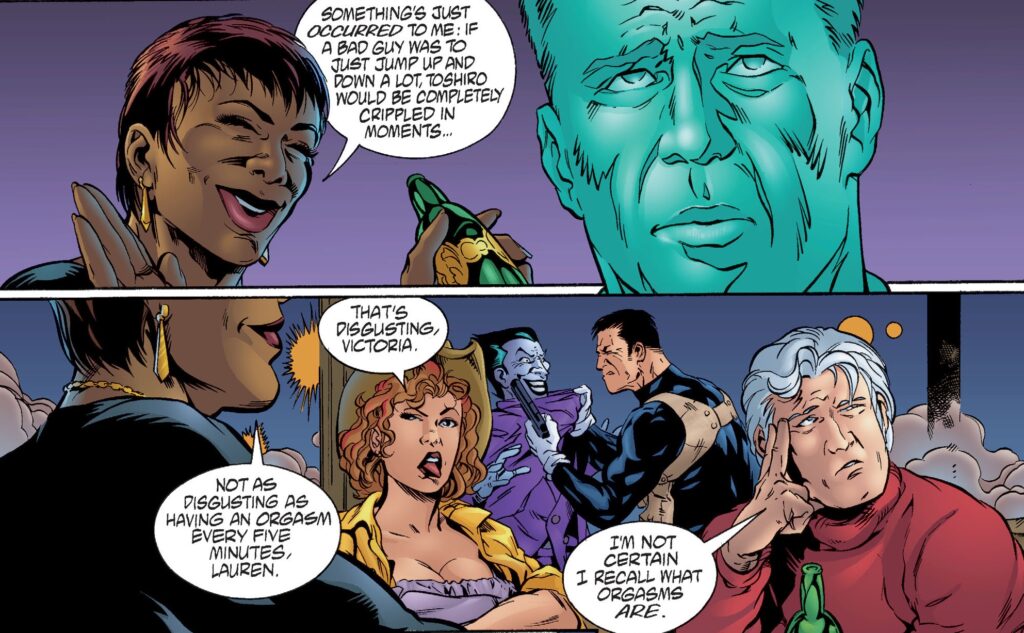
StormWatch (v2) #2
It’s such a solid gag that the sex jokes don’t have to be read as autobiographical. Still, revisiting this scene did bring to mind another Ellis comic – one where it’s become harder to ignore a creepy subtext about the writer’s proclivities.
In the second issue of 2002’s cult series Global Frequency, ‘Big Wheel,’ an international team is sent to deal with a deranged USAF captain ‘with five hundred million dollars’ worth of enhancement technology inside him,’ who has gone on a killing spree. When they finally come face to face with the murderous cyborg, we get this memorable exchange:
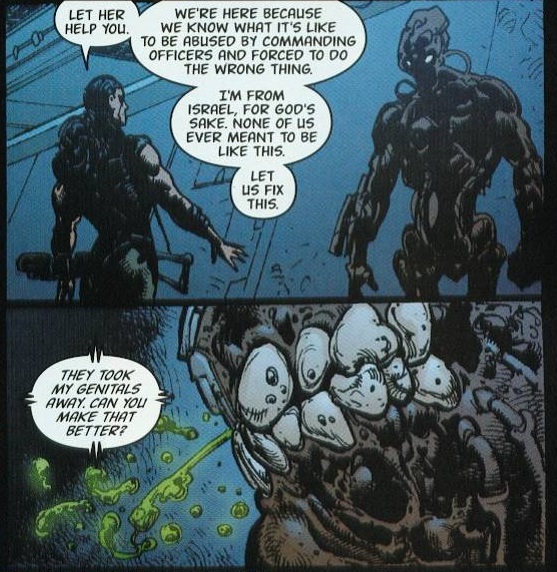
Global Frequency #2
I’m not saying Warren Ellis was consciously thinking of himself or conveying any clear self-loathing when he created a terrifying villain whose uncontrollable horniness made him choose to harm others rather than to restrain his sexual desire… Given Ellis’ infatuation with cyberpunk, body horror, and surrealism, perhaps he had just rewatched Tetsuo: The Iron Man for the millionth time and then came with this story in his nightmares.
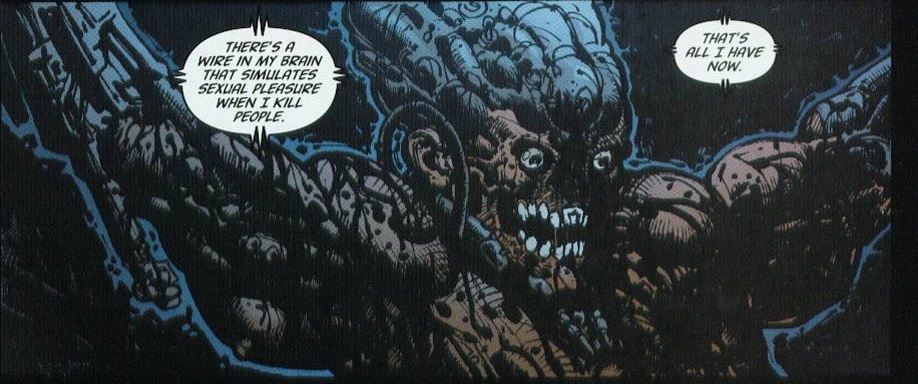
Global Frequency #2
As far as I know, Ellis didn’t necessarily consider himself a dangerous monster hurting others. However, as an intelligent writer, he has always known how to tap into deep fears and personal obsessions in order to develop disturbing ideas that shake up the readers… and so, I can’t help but wonder to what extent this fatalistic payoff could mean more than an efficiently cathartic conclusion to a kickass thriller:
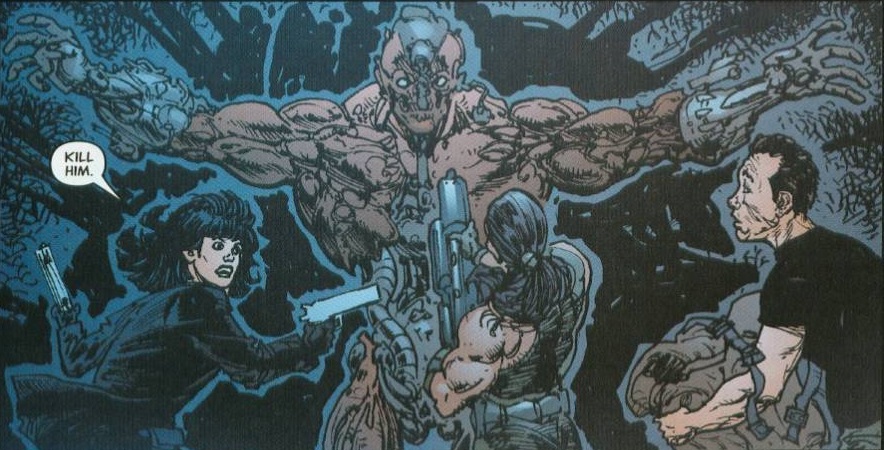
Global Frequency #2
